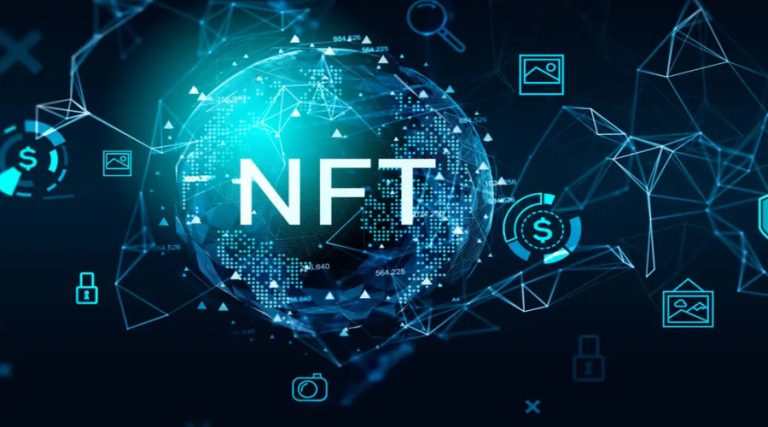Understanding The Basics: What Are NFTs Explained?
At their core, NFTs Explained: Non-Fungible Tokens (NFTs) are digital assets that represent ownership or proof of authenticity of a unique item or piece of content, typically using blockchain technology. Unlike cryptocurrencies like Bitcoin or Ethereum, which are fungible and can be exchanged for one another, NFTs are distinct. Each NFT has unique information or attributes that make it different from any other token, hence the term non-fungible.
NFTs can encompass a wide range of digital creations, including artwork, music, videos, and even virtual real estate. The uniqueness and scarcity of NFTs can enhance their value, making them appealing to collectors and investors alike.
The creation of an NFT typically involves minting it on a blockchain, which acts as a secure ledger. This process creates a digital certificate that proves ownership and can be transferred from one person to another. For many, this revolutionary approach has changed the way we think about ownership in the digital realm, allowing artists and creators to monetize their work in new ways.
Overall, understanding NFTs is crucial as they are becoming increasingly integrated into various industries, from art and entertainment to gaming and real estate—ushering in a new era of digital ownership.
How NFTs Work: From Creation To Ownership Verification
The process of creating and managing NFTs Explained: begins with the concept of blockchain technology. NFTs, or Non-Fungible Tokens, are unique digital assets verified through blockchain, enabling secure ownership and transfer. Unlike cryptocurrencies, which are fungible and can be exchanged on a one-to-one basis, NFTs represent something unique, often associated with digital art, collectibles, or other digital goods.
Creation of NFTs starts with minting, which is the process of converting a digital file into a blockchain item. The creator uploads the digital content to an NFT marketplace, which then generates a unique token on the blockchain that assigns ownership. Popular platforms for minting NFTs include OpenSea, Rarible, and Mintable.
Once an NFT is minted, it is assigned a specific identifier and metadata that make it distinct from any other digital asset. This metadata can include details about the artist, ownership history, and attributes of the digital item that make it unconventional.
To verify ownership, NFTs utilize smart contracts on the blockchain. A smart contract is a self-executing contract with the terms of the agreement directly written into code. This ensures that the ownership and provenance of the NFT can be tracked transparently and securely. Whenever an NFT is sold or transferred, all transactions are recorded on the blockchain, making the history of ownership easily traceable.
Through this process, buyers can confidently purchase NFTs, knowing that their ownership is verified and officially recorded. This level of security and authenticity is one of the key factors that contribute to the growing interest in the NFTs Explained: market among investors and collectors alike.
Key Benefits Of NFTs: Why Investors Are Interested
As the digital landscape evolves, NFTs Explained: offer a unique set of advantages that attract investors from various sectors. Here are some of the key benefits that make NFTs an appealing opportunity:
- Ownership and Authenticity: NFTs utilize blockchain technology to provide verifiable proof of ownership and authenticity, ensuring that each digital asset is unique and cannot be duplicated. This characteristic is appealing to investors looking for unique collectibles or rare digital art.
- Potential for High Returns: Many early adopters of NFTs have seen significant returns on their investments, especially in thriving markets for digital art, music, and virtual real estate. This potential for profit attracts investors looking to capitalize on emerging trends.
- Fractional Ownership: NFTs allow for fractional ownership, meaning that investors can buy shares of high-value digital assets. This democratizes access to artworks and collectibles that may otherwise be out of reach, spreading the risk and making investment more accessible.
- Diversification: Investing in NFTs can provide diversification for an investment portfolio, particularly as they often respond differently to market conditions compared to traditional assets like stocks or real estate.
- Community Engagement: Many NFT projects are built around communities that offer additional incentives to investors. This engagement can include access to exclusive events, collaborations, and opportunities to influence future developments, providing investors a sense of belonging and participation.
- Royalties for Creators: NFTs often come with smart contracts that ensure creators receive royalties from secondary sales. This not only incentivizes artists to create more but also establishes a sustainable ecosystem where the value of original works is recognized.
The benefits of investing in NFTs are numerous and diverse. Understanding these advantages contributes to a clearer picture when navigating the intricate world of NFTs. As the digital economy continues to expand, it is vital for investors to be informed about these opportunities to make sound investment decisions.
Challenges And Controversies Of NFTs Explained
The rise of NFTs has sparked significant debate and controversy across various sectors. While they offer unique opportunities for creators and investors, they also raise serious concerns that cannot be ignored.
One of the primary challenges surrounding NFTs is their environmental impact. The energy consumption associated with blockchain technology, particularly proof-of-work systems like Ethereum, has been criticized for contributing to carbon emissions and environmental degradation. This concern has led to calls for more sustainable practices within the NFT space.
Another controversial aspect is copyright infringement. As NFTs can be created from digital art or media without the original creator’s consent, there have been numerous instances of artwork being tokenized and sold without proper authorization. This has sparked legal disputes and has led to discussions about the need for clearer copyright laws tailored to the digital age.
Additionally, the volatility of the NFT market poses a risk for investors. Prices can fluctuate dramatically based on trends, demand, and speculation, which can result in substantial financial losses. This unpredictability raises questions about the long-term value of NFTs and whether they are a sound investment strategy.
There is the issue of access and inclusion. The technical knowledge required to create, buy, and sell NFTs can be a barrier for many artists and potential investors. Without necessary resources and education, a significant portion of the population could be excluded from participating in the NFT economy, leading to a concentration of wealth within a small group of individuals.
While NFTs Explained: offer exciting possibilities, they also bring forward challenges that require careful consideration and action to ensure a balanced and equitable digital market.





